An alpine winter sports collection confronting the climate crisis — staged in one of the world’s rapidly disappearing glacier regions.
Video & Photo | Kevin Mohr
Producing | Studio Praam – Hendrik van Amstel
Model | Chalin Hüge & Julia Neumann
H&M | Chalin Hüge
Design | Antonia Dannenberg
Video & Photo | Kevin Mohr
Producing | Studio Praam – Hendrik van Amstel
Model | Chalin Hüge & Julia Neumann
H&M | Chalin Hüge
Design | Antonia Dannenberg
MELTDOWN is a performative fashion project addressing the visible and accelerating consequences of climate change — especially the melting of alpine glaciers.
Developed as a bachelor’s thesis, the collection translates the ecological narrative of glacier retreat into a six-part design concept for alpine winter sportswear. It was staged and documented in one of the regions directly affected by glacier loss.
From floods to droughts, heavy rainfall to water scarcity: the garments represent both present danger and future disruption — driven by rising global temperatures.

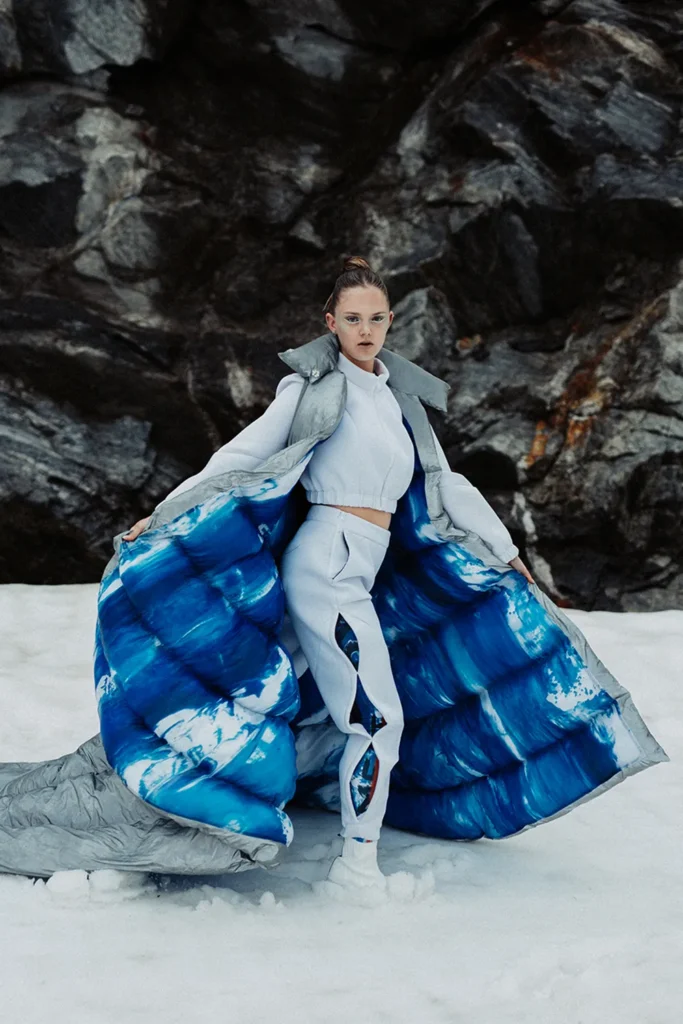
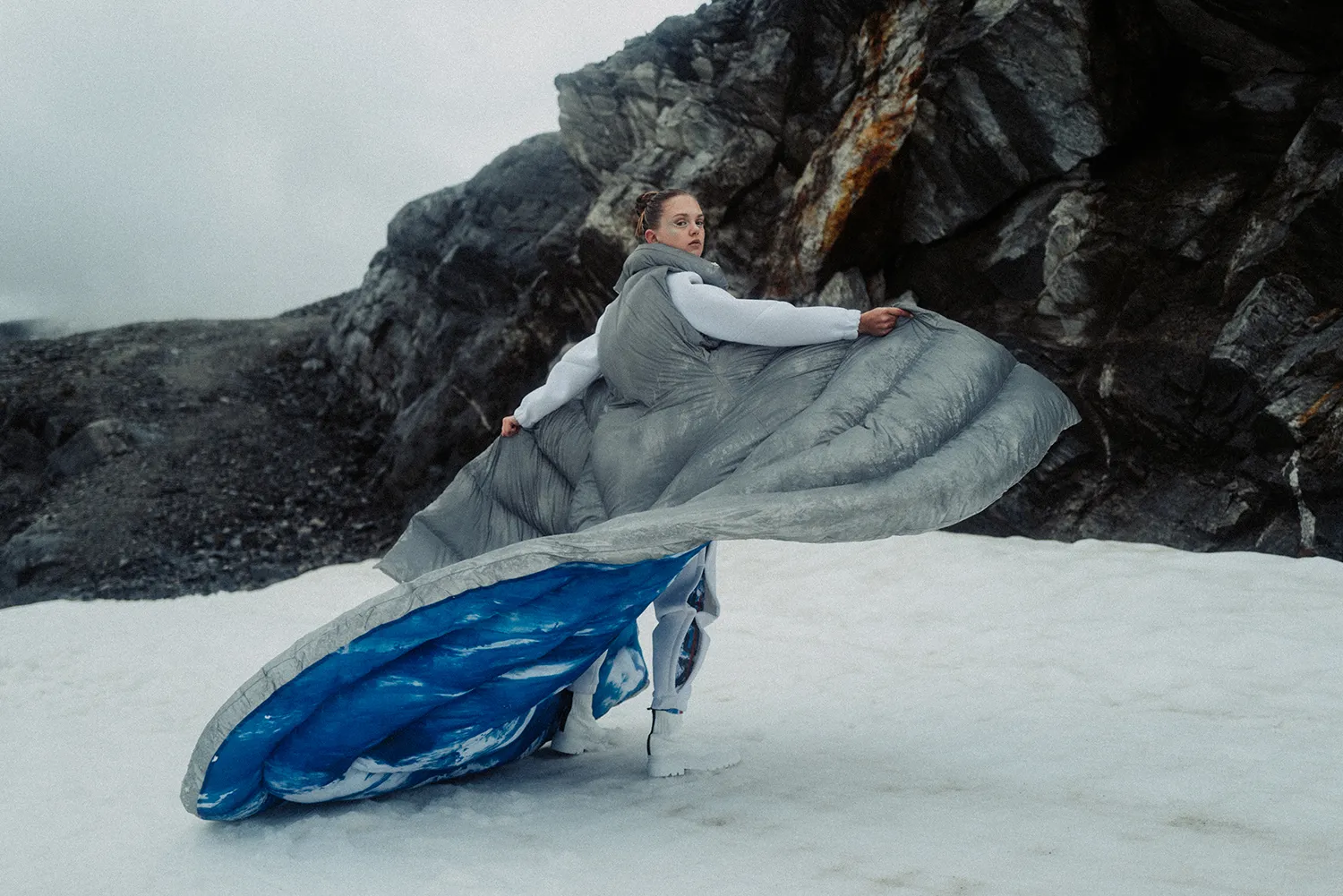
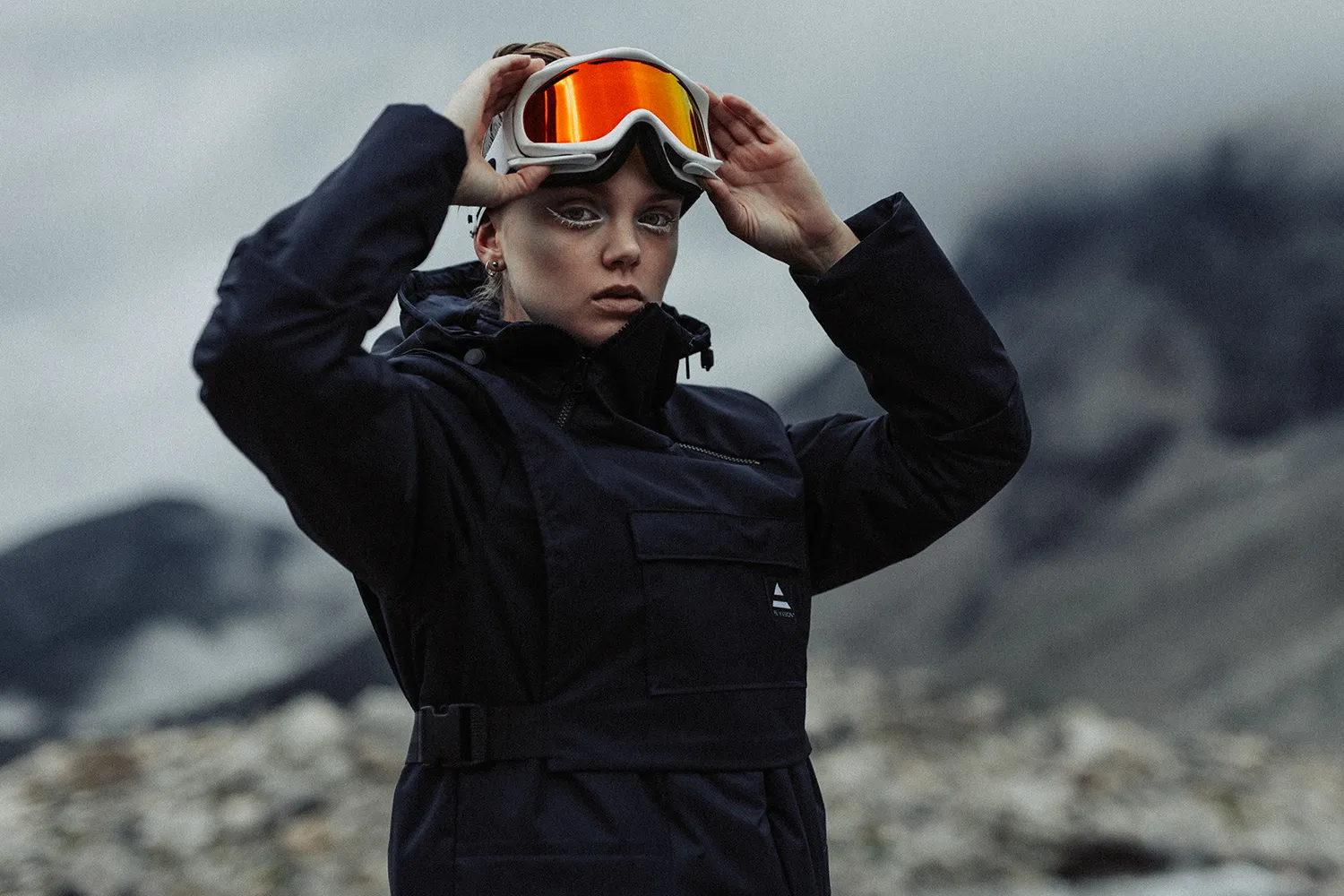
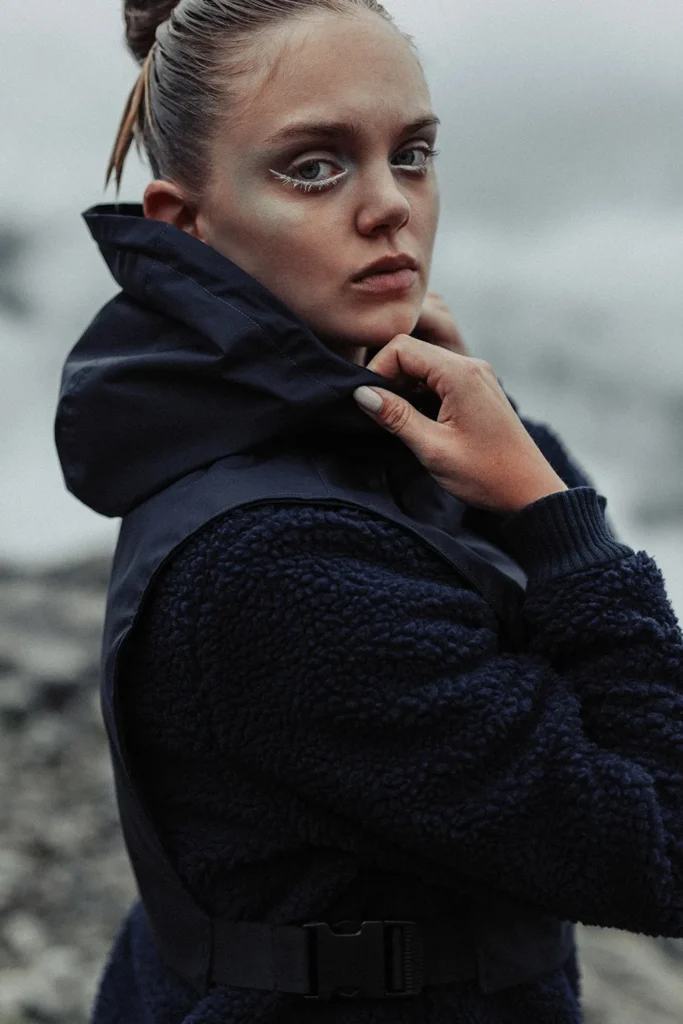
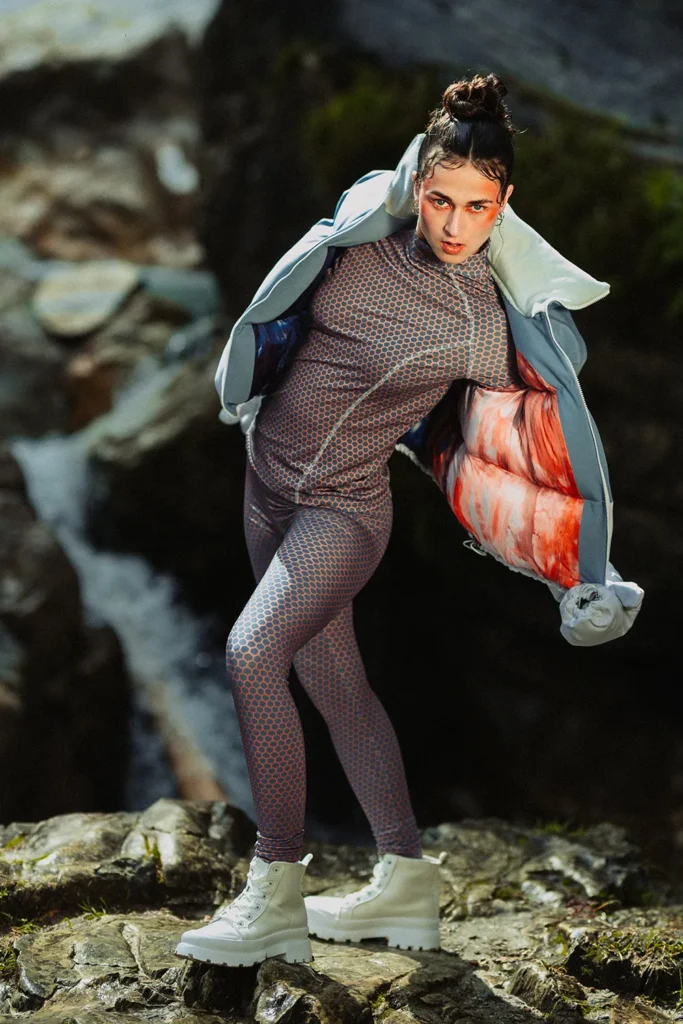
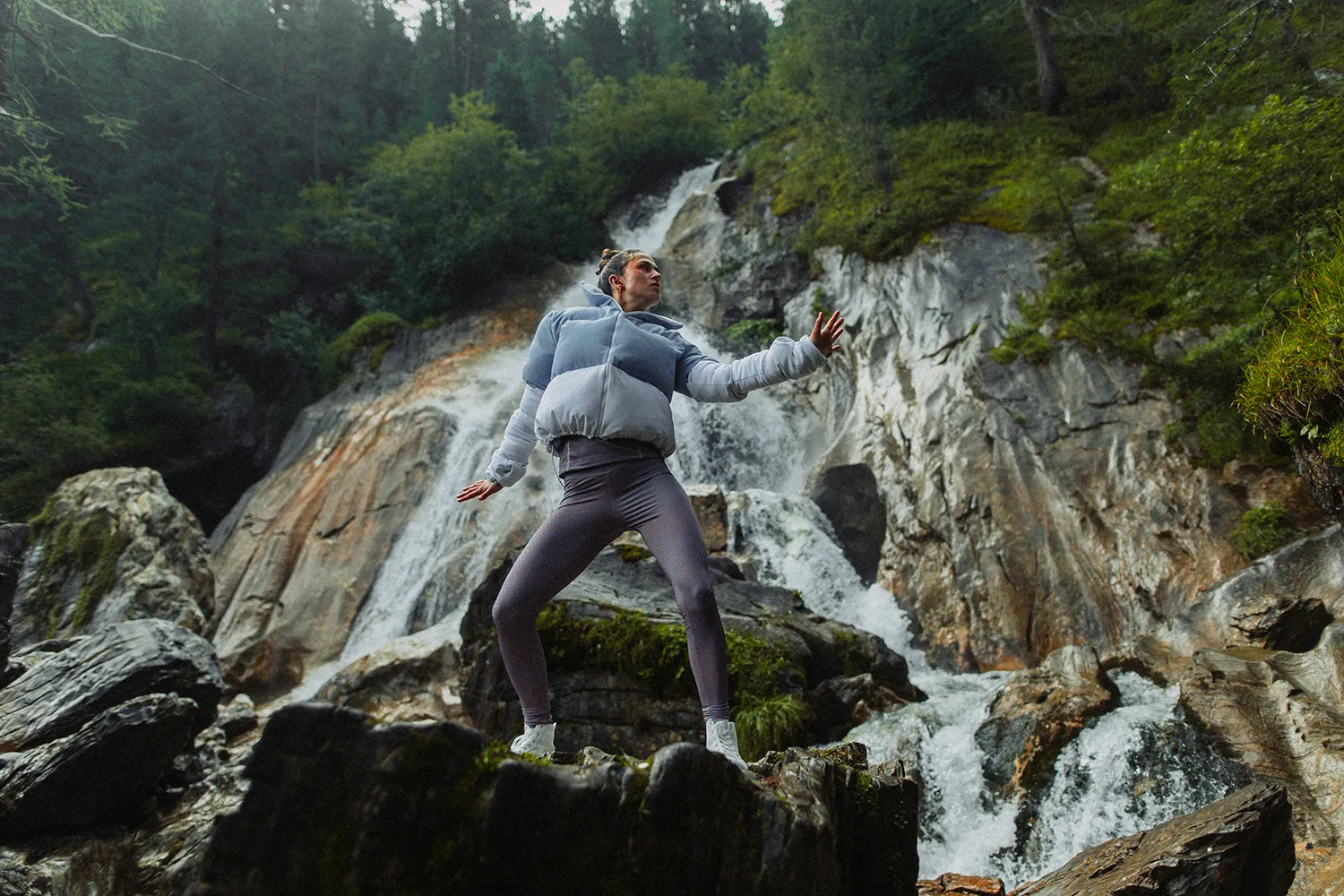
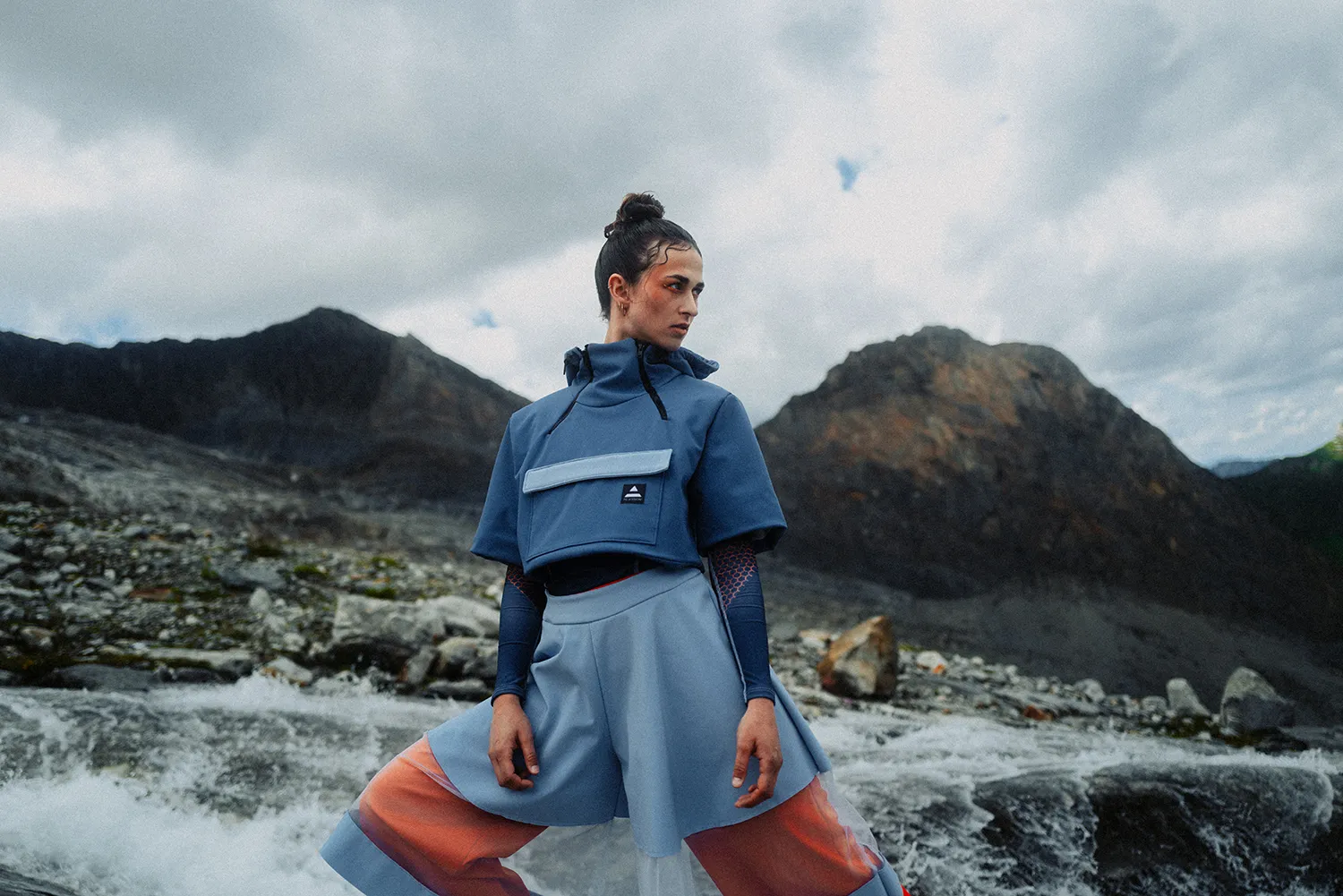
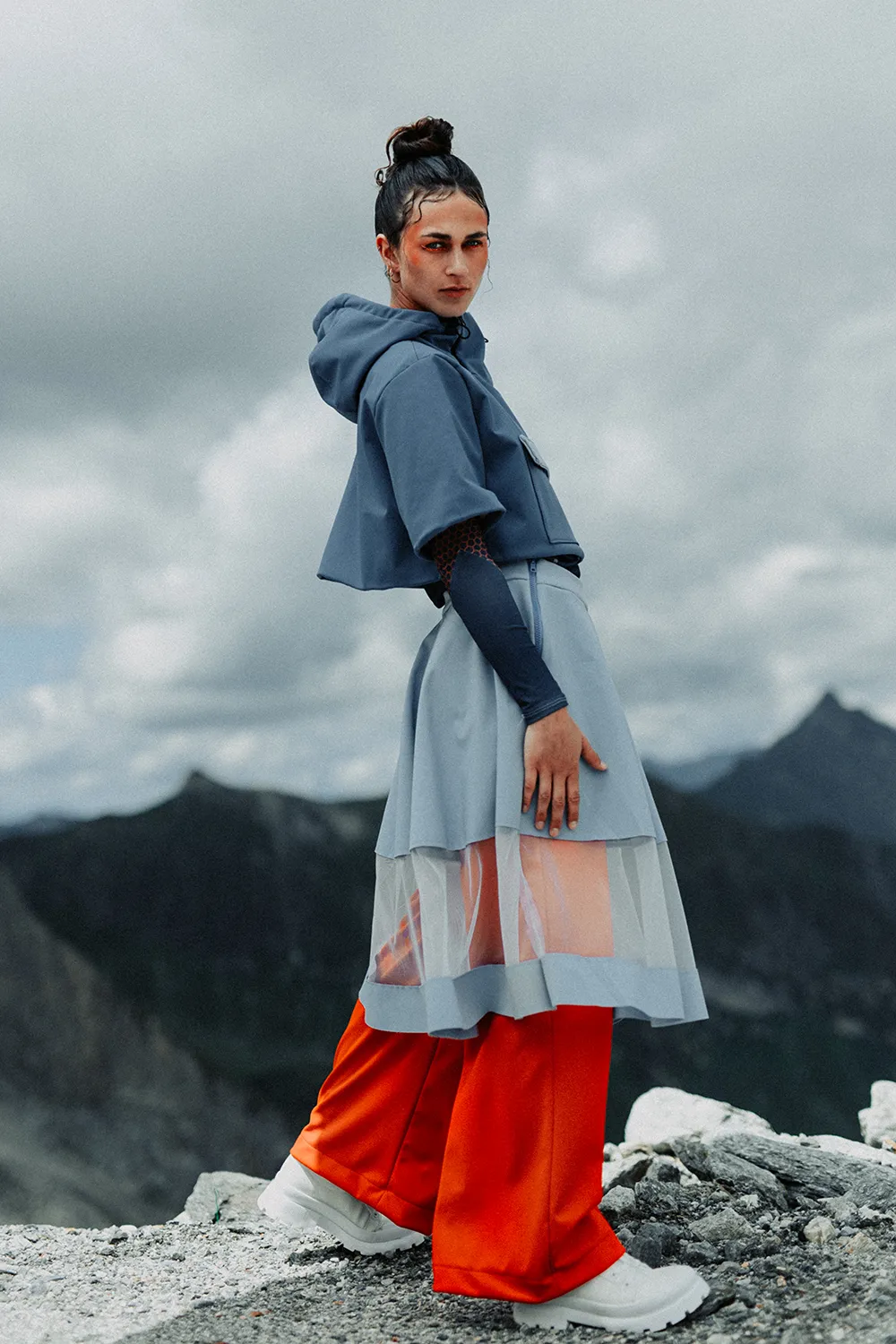
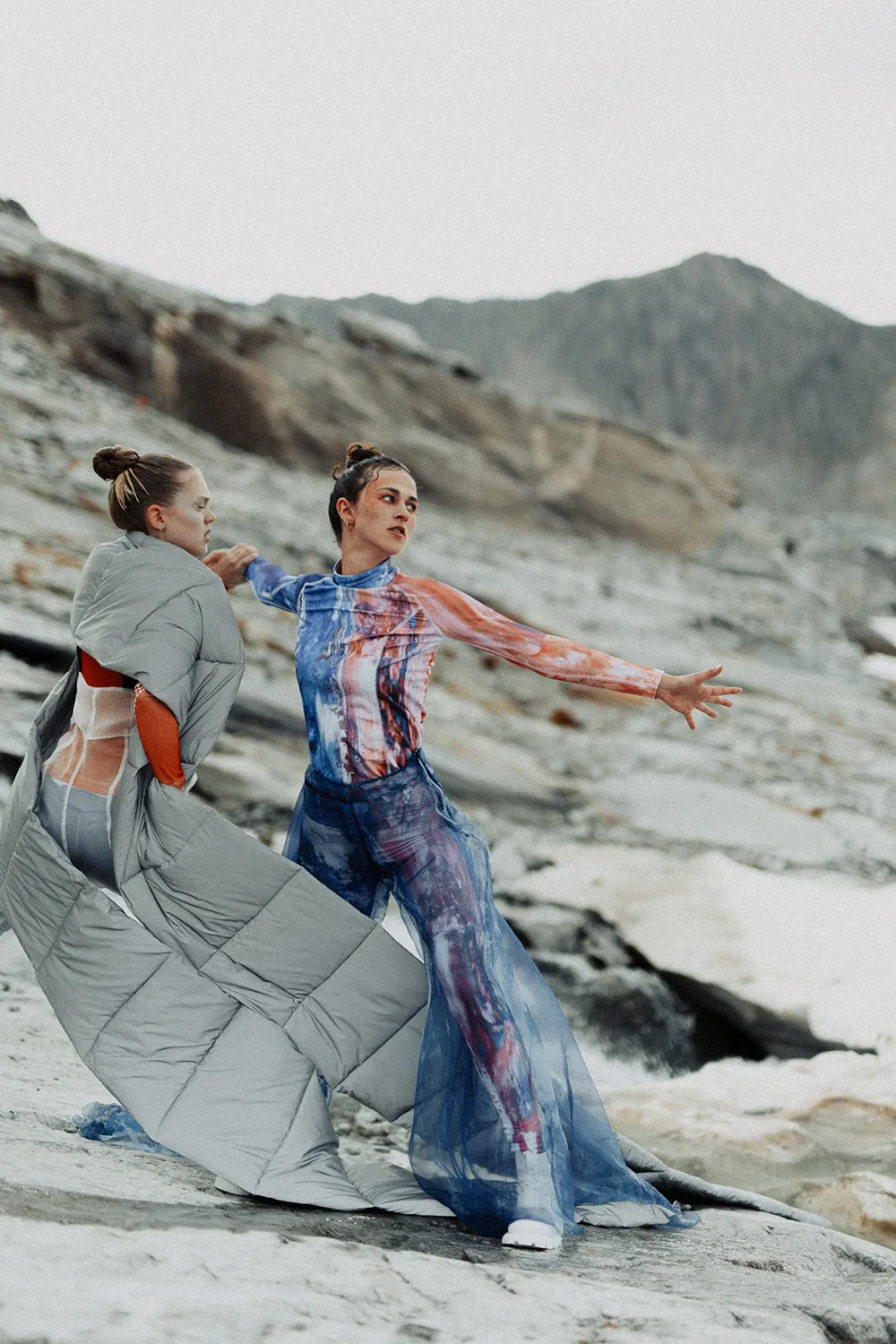
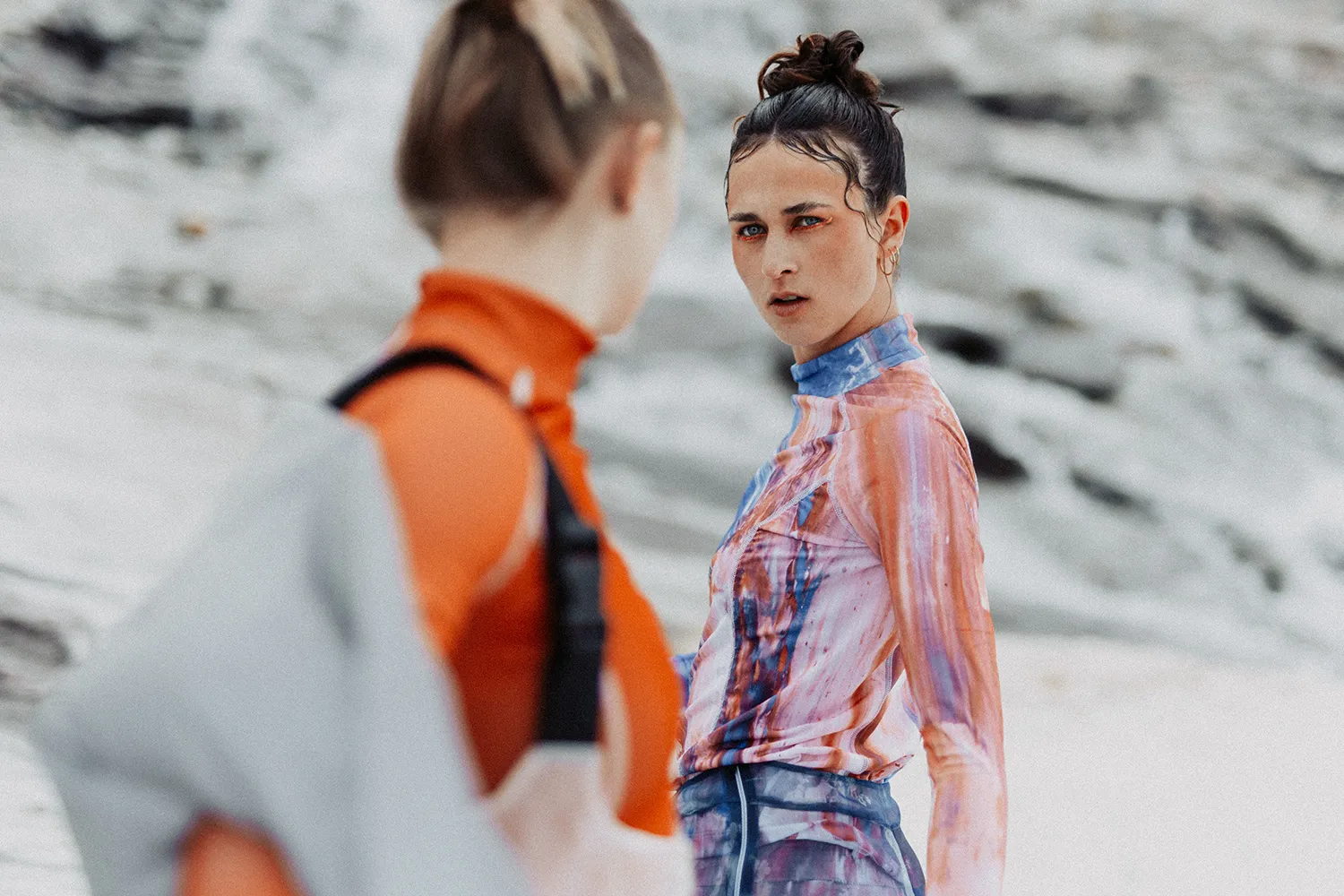
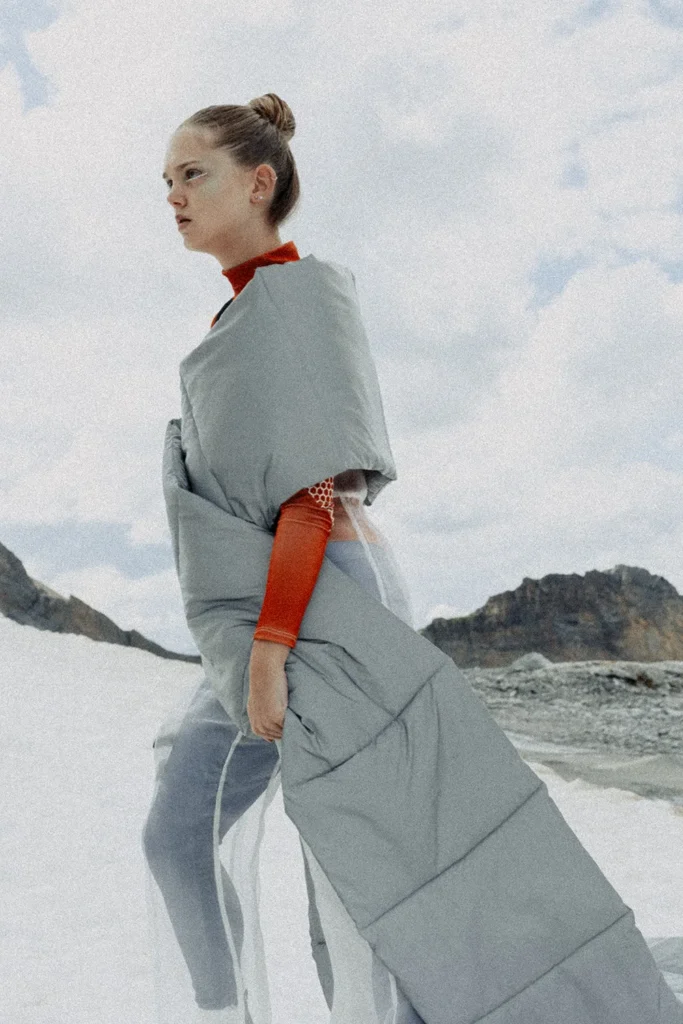
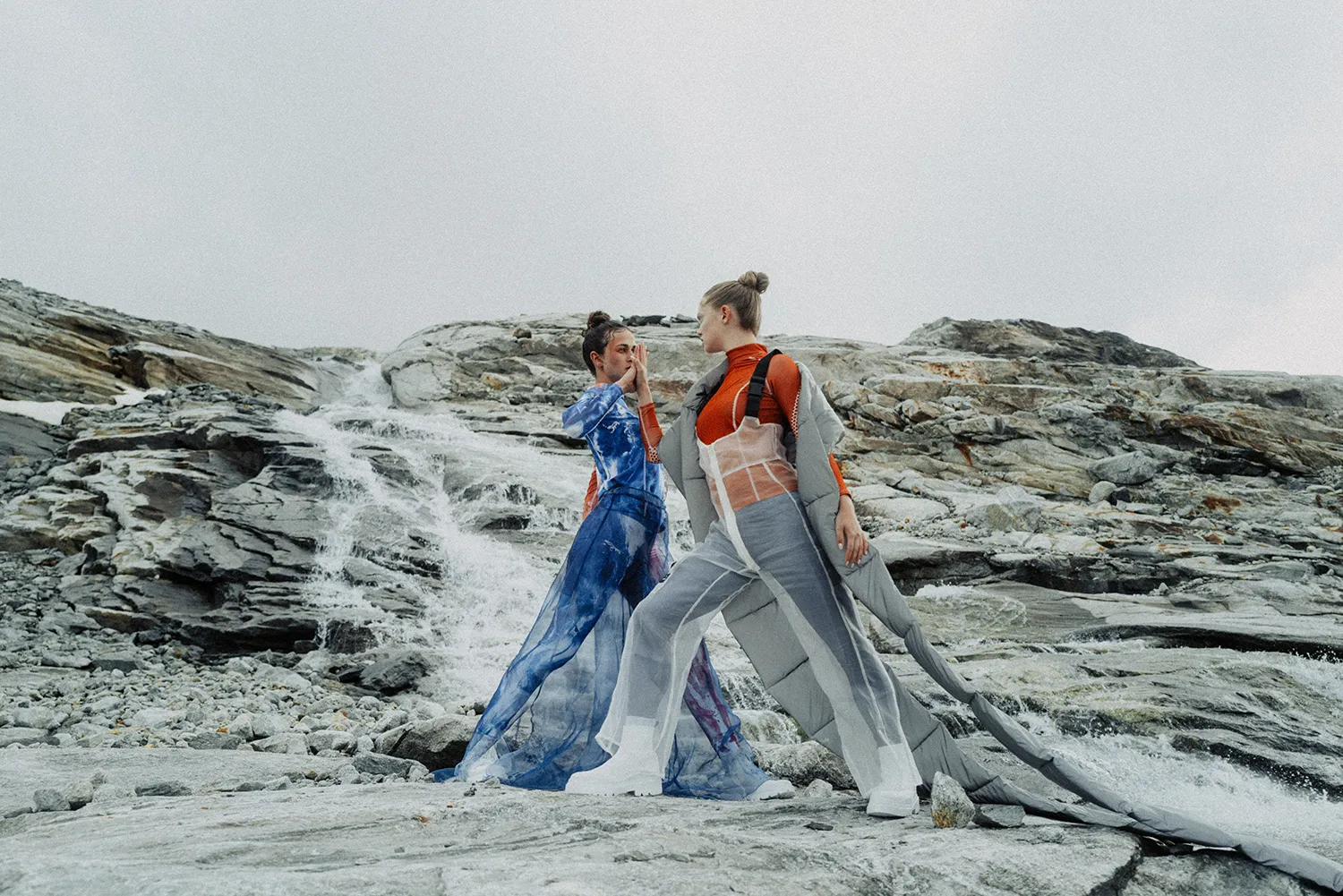
The visual concept of MELTDOWN draws inspiration from the scientific climate data visualization by Ed Hawkins and the material properties of graphene.
Color and material transitions tell a story of change:
Heavy fabrics like softshell and fleece protect against the cold — while sheer textiles like organza and silk express the shift toward rising temperatures. The collection moves from protection to exposure — echoing the melting process itself.
MELT DOWN was presented at Neo.Fashion. 2022 in Berlin as part of the Best Graduates Show during Berlin Fashion Week. The collection stood out for its conceptual clarity, material experimentation, and sustainability-driven narrative — and was awarded in the category “Best Innovation.”
This recognition highlights the collection’s unique approach: translating scientific climate data and ecological urgency into functional, performative fashion.